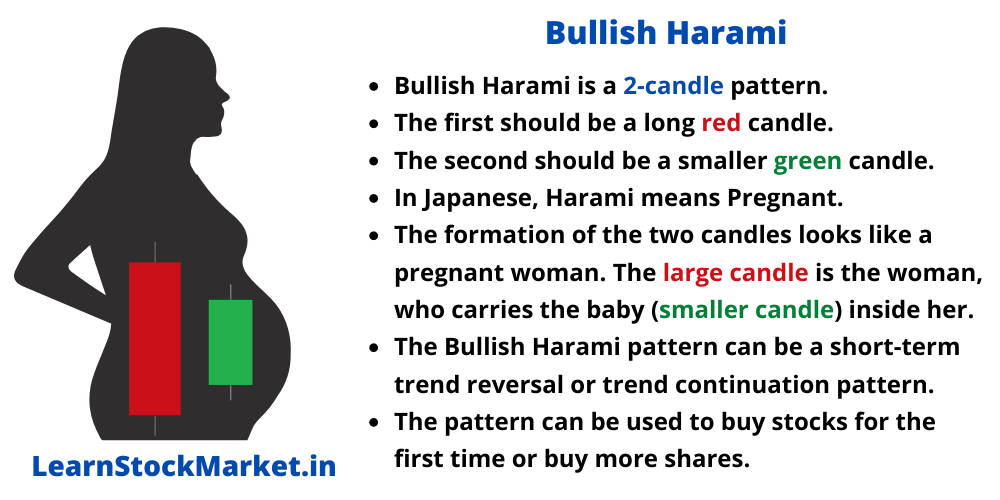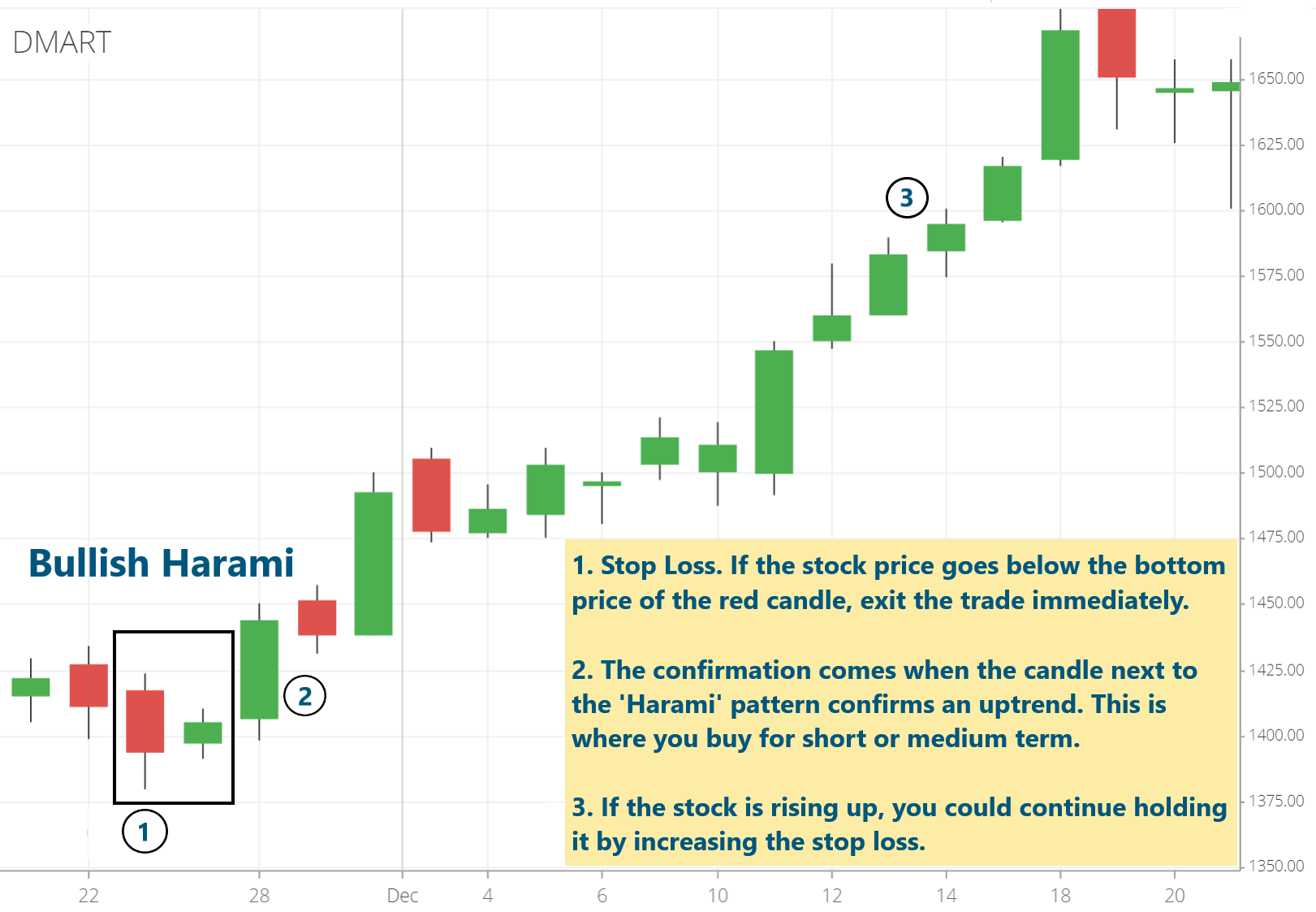Bullish Harami is a 2-candle pattern, which can form on the chart after a short term downtrend.
The word ‘Harami’ might sound funny to us Indians, but in Japanese ‘Harami’ means pregnant.
For the pattern to be called ‘Bullish Harami’, the following has to happen:
- The first candle has to be large and red (bearish).
- The second candle should be green (bullish).
- The second green candle has to be smaller in size and between the body of the previous red candle.

Psychology of Bullish Harami
The stock price is always a battle between the bulls (buyers) and bears (sellers). It’s purely demand vs supply.
Now, imagine this:
A stock has been falling for the last few days. One day, a big red candle gets formed – which means, the sellers are in complete control.
The next day, the stock opens gap up. Looking at the rise in price, those who are short on the stock, begin to fear that the stock might rise up.
They cover their short positions – this takes the price further up.
With the rise in price, the grip of the sellers is weakening. The buyers are taking control.
If the stock opens higher on the third day (i.e after the Bullish Harami formation) – then it’s a confirmation that the trend could reverse and the stock price could go up.
Bullish Harami Trading Strategy
The ‘Bullish Harami’ pattern works fairly well across all time frames. The pattern is quite common and can be formed very frequently on charts.
Intraday traders can look at 5 minute, 10 minute and 15 minute charts. If the ‘Bullish Harami’ appears on any of these time frames and the next candle after the pattern is bullish, a trade can be taken.
Those who are looking to take short term or medium term positions, then the charts to be looked at would be 60 minute, Daily and Weekly.
The ‘Bullish Harami’ can be formed during a ‘trend reversal’ or ‘trend continuation’.
Trend reversal happens when a stock has been on a downtrend for a longer period of time. Since the ‘Bullish Harami’ is less effective during major trend reversals, traders should ideally use other trading indicators.
Trend Continuation means a stock has been on a longer-term uptrend, but shows minor downside correction in the short term. If a ‘Bullish Harami’ gets formed during a minor correction, traders can take short-term positions.
From my experience, the Bullish Harami has been more effective during ‘Trend Continuation’.
Bullish Harami Example

The above chart is of Avenue Supermarts (popularly known as Dmart).
The stock formed a ‘Bullish Harami’ pattern – marked in the black box in the image.
A trader can buy the stock if the stock opens in green after the Bullish Harami pattern is formed.
For further confirmation, the buy position can be taken once the price crosses the high of the first red candle.
The stop loss will be the bottom of the red candle.
If the stock price continues to rise, as seen in the chart above. The trader can slowly increase the stop loss and keep holding the position – till there is a bearish candlestick pattern on the chart or until other trading indicators suggest the stock might go down.
Importance of Volume and Overall Market Movement for Bullish Harami
A couple of important points for Bullish Harami to work more effectively.
If the volume of the second green candle is higher than the first red candle, it’s considered to be a positive sign.
Also, keep an eye on the overall market movement. If the second green candle of the ‘Harami Pattern’ gets formed on a day when the market is not performing well, then it means the stock has extra strength.
Bullish Harami for Long Term Investors
If you have done your research and decided to buy a particular stock for long term investment, ‘Bullish Harami’ patterns that appear after a short-term correction, can be used to accumulate quality stocks at lower prices.

top class tutor .well done respected author
Works well…
Nicely explained